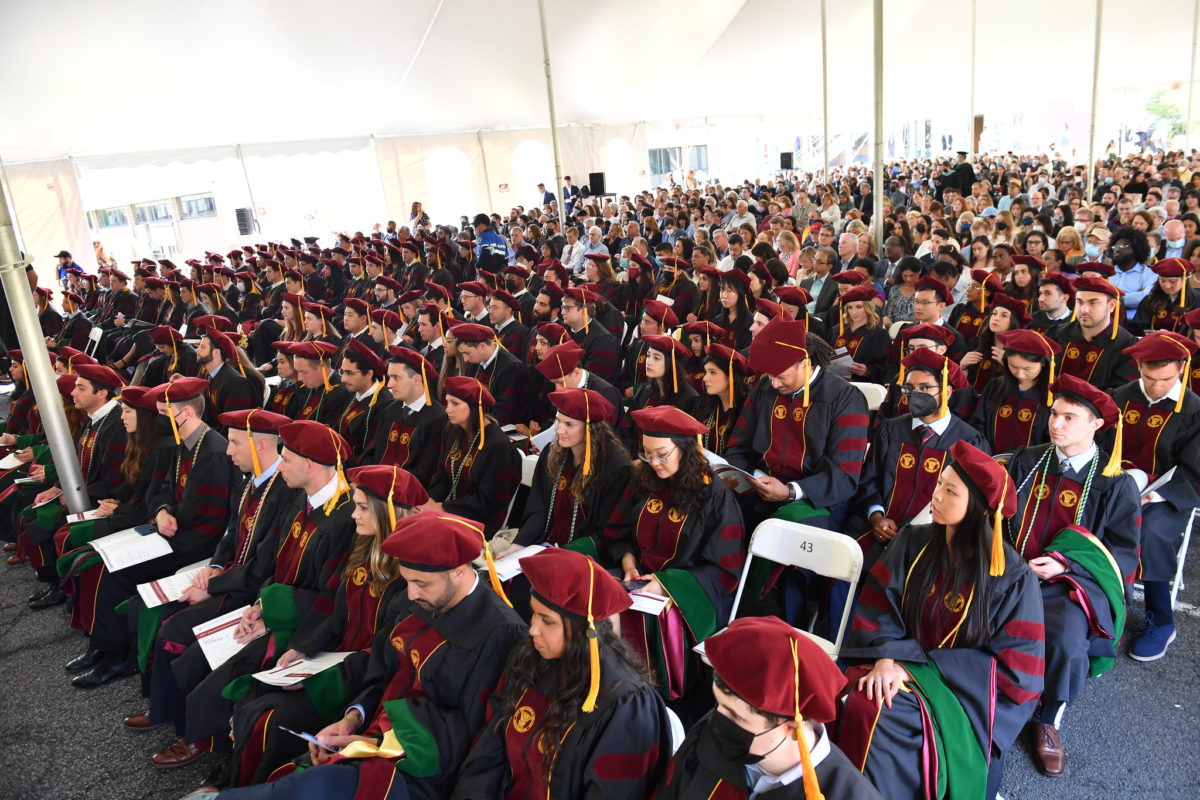On May 19, a gathering of Bridgeport business leaders came together at the Downtown Cabaret Theatre to discuss ways to revitalize the city’s downtown commercial area. The businesses represented were diverse, ranging from an art gallery and a massage parlor to high-end cosmetic retailers and a brewery.
Organized by the Bridgeport Downtown Special Services District (DSSD) in partnership with the Bridgeport Chamber of Commerce, the session was moderated by Razul Branch, merchant engagement coordinator for the Bridgeport DSSD, and Lauren Coakley Vincent, the president and CEO of the Bridgeport Special Services District.

Cris Dam of the URSA Gallery shared that he had had some success calling attention to his business with mailers and postcards but added he was worried about the current state of affairs at the Bishop Arcade, where his gallery is located.
“It’s a shame what’s going on with the arcade now,” Dam said. “We’re pretty much empty on the bottom floor.”
The arcade, built in the late Victorian era, was one of the first shopping malls in the country and is something of a hidden architectural gem in Bridgeport. Its historic and elegant glass dome is accessed through an unassuming door that opens onto Main Street. Coakley Vincent floated the possibility of the building serving as an additional cultural anchor for the neighborhood.
“I know for a fact that we’re full up on residents, and we’re full up on art spaces, meaning if you’re looking to rent a studio and work as an artist that’s not readily available,” Coakley Vincent said.
Dam replied that while that might be true, there was still a lot of empty space downtown, with many empty storefronts which was also detrimental to the open businesses in the region.
That sentiment was shared by Janese S. Blagrove, the owner of JSB Cosmetics. She pointed to the presence of storefronts, which were used for office space.
“We have all these nonprofits in here using what should be retail spaces with retailers,” she said. “That’s why people are saying there’s nobody downtown, there’s nothing.”
The presence of “empty spaces” that need to be filled was also an issue that required an urban planning approach, according to Christina Smith, president and CEO of Groundwork Bridgeport, a nonprofit that defines its mission as bringing “sustained regeneration, improvement, and management of the physical environment, by empowering people, businesses, and organizations to promote environmental, economic, and social well-being.”
Other solutions proposed for the entire downtown area included digital billboards along I-95, rerouting traffic after events at Harbor Yard, ensuring that future murals placed by the city can help promote businesses as well as provide aesthetic value and taking steps to ensure people know that the area has shopping and daytime activities to offer beyond the bars and nightclubs.
The possibility of a magazine promoting the city was also floated, along with exploring regulations such as those adopted in Hartford’s downtown that require first floor spaces with street access be used for retail and visitor-oriented businesses instead of office space.
Frustration was also expressed with landlords who have allowed storefronts to sit empty or be taken over by law firms that do not promote foot traffic which is vital to retail.
While there was some disappointment in the room, there was also optimism about the possibility of the solutions discussed to help the downtown. However, Hugh Hallinan, the executive director and producer of the Downtown Cabaret Theatre, reminded those gathered that they need more than just a plan.
“A highway sign is a great idea,” Hallinan said, “But we need a lot of money to put into these initiatives and the city can’t afford it. We need to find it ourselves or have the city help us find it. Yes, they have resources, but what would help more is a way to coordinate a message on all the things that happen in downtown Bridgeport.”





















